Delving into Berlin’s tumultuous past, this WWII walking tour offers a unique opportunity to uncover the city’s captivating history. Led by local experts, you will explore iconic landmarks like the New Synagogue and the Brandenburg Gate, while also confronting the sobering realities of the Holocaust and the remnants of Nazi rule. From the Bebelplatz’s impressive architecture to the haunting ruins of Hitler’s bunker, each step of the journey provides a poignant reminder of the resilience and perseverance that have shaped Berlin’s remarkable transformation. Prepare to be immersed in a narrative that challenges and inspires, leaving you eager to discover more about this complex and fascinating city.
Key Points

- Explore Berlin’s WWII history through a private walking tour, visiting iconic sites like Hitler’s Bunker and the Bebelplatz to gain a deeper understanding of the Nazi regime’s rise and fall.
- Discover the emotional impact of the city’s division during the Cold War by visiting the Palace of Tears, a poignant border crossing where families were separated.
- Appreciate Berlin’s resilience and unity by witnessing the transformation of the Brandenburg Gate, a symbol that transitioned from division to celebration.
- Reflect on the horrors of the Holocaust at the powerful and thought-provoking Memorial to the Murdered Jews of Europe, a sobering reminder of humanity’s capacity for cruelty.
- Enjoy Berlin’s rich cultural heritage by visiting the UNESCO-listed Museum Island, home to an impressive ensemble of world-renowned museums showcasing art, history, and archaeology.
New Synagogue’s Moorish Architecture
The New Synagogue in Berlin boasts a striking Moorish architectural style, a design that commands attention and reflects the rich cultural heritage of the Jewish community.
Constructed in the mid-19th century, the synagogue’s exterior features intricate arches, domes, and minarets that evoke the grandeur of ancient Middle Eastern houses of worship.
Inside, the sanctuary is adorned with ornate columns, vibrant mosaics, and elaborate stained glass windows that flood the space with natural light.
The synagogue’s Moorish design was a bold statement, showcasing the integration and acceptance of Berlin’s Jewish population during a time of increasing tolerance.
Today, the New Synagogue stands as a beloved landmark, a testament to the city’s multicultural past and present.
Want to keep it personal? More private experiences we love in Berlin
A Border Point Between East and West
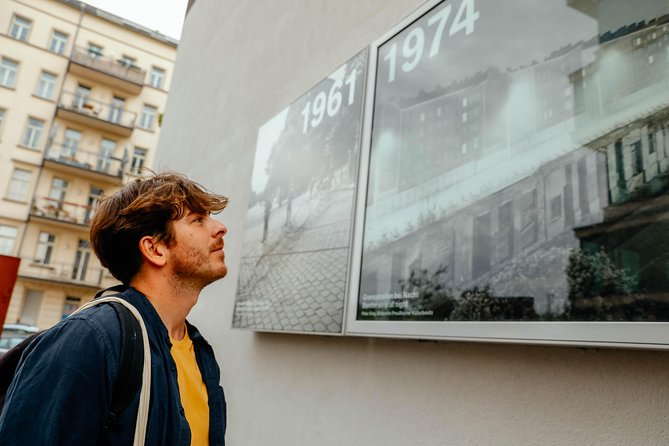
The Palace of Tears once stood as a stark reminder of Berlin’s division, a border point between the East and West that witnessed countless emotional farewells and reunions during the Cold War era. Travelers passing through this former checkpoint experienced the bittersweet pangs of separation, as loved ones were forced to part ways on either side of the Iron Curtain.
The border crossing was a complex and often harrowing experience, fraught with uncertainty and tension. Families were split, friends were torn apart, and dreams were shattered as the implacable grip of ideology tore through the fabric of human connections.
| Emotions Felt | Experiences at the Palace of Tears |
|---|---|
| Anguish | Forced partings of loved ones |
| Hope | Joyful reunions after long years |
| Desperation | Uncertainty of crossing the border |
| Resilience | Determination to overcome barriers |
This poignant relic of Berlin’s divided past serves as a powerful reminder of the human cost of geopolitical conflict, and the enduring strength of the human spirit to overcome even the most formidable of obstacles.
The Iconic Brandenburg Gate
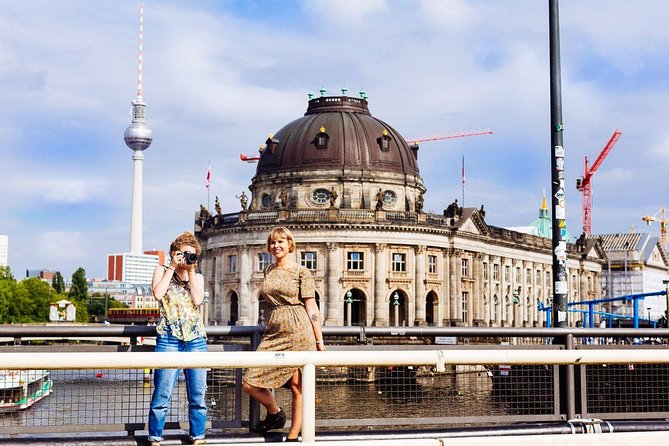
Although a symbol of division during the Cold War era, the iconic Brandenburg Gate has long represented unity and national pride for the German people.
Towering over the bustling Pariser Platz, this magnificent 18th-century neoclassical structure stands as a testament to Berlin’s rich history and resilience in the face of adversity. Visitors can’t help but be awestruck by the Gate’s grand scale and intricate architectural details.
It’s easy to imagine the momentous events that have unfolded here, from the triumphal parades of Prussian kings to the joyous celebrations when the Berlin Wall fell in 1989.
Today, the Brandenburg Gate remains a powerful symbol, reminding all who pass through of Germany’s remarkable journey from a divided nation to a united, thriving democracy.
The Sobering Holocaust Memorial

Stepping into the expansive, undulating sea of concrete blocks that make up the Holocaust Memorial, visitors are immediately struck by the somber, contemplative atmosphere. Designed by architect Peter Eisenman, this profoundly moving tribute to the millions of Jewish victims of the Nazi genocide compels reflection on the darkest chapter of Germany’s past.
Each block, varying in height, represents a sense of unease and disorientation, mirroring the experiences of those who perished. As visitors navigate the maze-like memorial, the weight of history bears down, inviting deep introspection on the horrors of the Holocaust and the importance of ensuring such atrocities never happen again.
This sobering site serves as a poignant reminder of the human capacity for both cruelty and resilience.
Hitler’s Bunker: WWII and Nazi Rise

Beneath the streets of central Berlin lies the former Führerbunker, an underground complex that served as the nerve center of Adolf Hitler’s final days during World War II and the eventual collapse of the Nazi regime. As Soviet forces closed in on the capital in 1945, the Führerbunker provided a secure, though increasingly claustrophobic, refuge for Hitler, his inner circle, and their families – a grim testament to the desperate final chapter of the Third Reich.
| FINAL DAYS OF THE THIRD REICH | INSIDE THE FÜHRERBUNKER |
|---|---|
| Hitler’s suicide on April 30, 1945 | Bunker housed over 30 rooms |
| Red Army captures Berlin on May 2 | Reinforced concrete construction |
| Nazi Germany surrenders on May 8 | Included living quarters, conference rooms |
The Führerbunker has become a symbol of the horrors and ultimate downfall of the Nazi dictatorship, a chilling reminder of the depravity and desperation that characterized its final, tragic hours.
If you're enjoying exploring Berlin on foot, you'll love these other walking tours we recommend
Impressive Bebelplatz Architecture
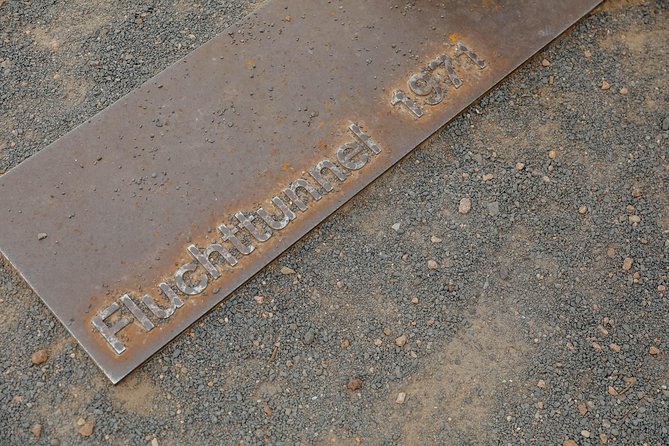
As the tour winds through the historic Mitte neighborhood, visitors can’t help but be captivated by the impressive architecture of Bebelplatz.
This public square boasts an array of stately buildings that showcase the grandeur and significance of this iconic Berlin location. The centerpiece is the Staatsoper, the Berlin State Opera House, a stunning neoclassical structure that dates back to the 18th century.
Nearby, the St. Hedwig’s Cathedral and the Alte Bibliothek, the old library, further accentuate the square’s architectural splendor. This harmonious blend of historic buildings creates a striking visual experience, transporting visitors back in time and underscoring Bebelplatz’s enduring cultural and historical importance within Berlin.
UNESCO-listed Museum Island
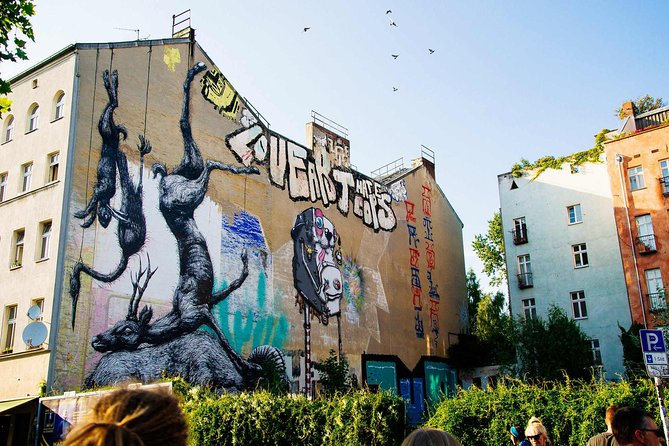
Situated on the northern tip of the Spree River, the UNESCO-listed Museum Island stands as a testament to Berlin’s rich cultural heritage.
This remarkable ensemble of five world-renowned museums, each with its own distinct architectural style, draws visitors from around the globe to explore the city’s remarkable collection of art, history, and archaeology.
The highlights of Museum Island include:
- The Pergamon Museum, home to the iconic Pergamon Altar and the Market Gate of Miletus.
- The Neues Museum, featuring the iconic bust of Queen Nefertiti.
- The Altes Museum, showcasing an impressive collection of Greek and Roman antiquities.
- The Bode Museum, with its extensive Byzantine art and sculpture displays.
Visitors can easily spend an entire day immersed in the captivating narratives that unfold within these halls of history and creativity.
Customizable Tour and Personalized Attention
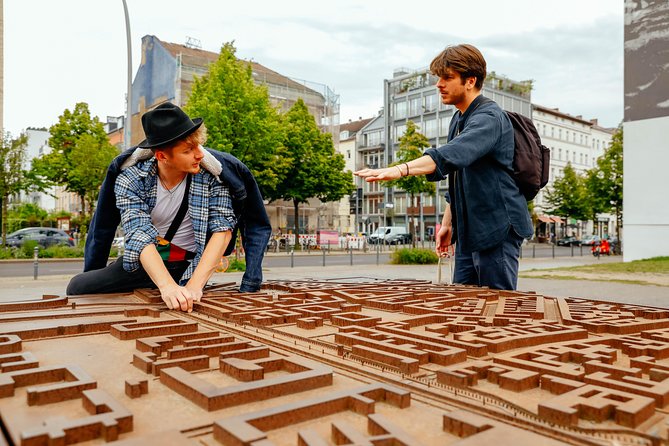
The tour’s customizable nature allows guests to tailor the experience to their unique interests, while the personalized attention from the knowledgeable local guides ensures a truly immersive and enriching exploration of Berlin’s past and present.
Whether you’re fascinated by the city’s architectural wonders, captivated by its wartime history, or eager to uncover hidden gems, the guide will work closely with you to curate an itinerary that matches your passions.
With a flexible schedule and the freedom to adjust the pace and focus as you go, you’ll enjoy a one-of-a-kind journey that brings Berlin’s complex and compelling story to life in a way that resonates most with you.
Frequently Asked Questions
Do We Make Any Stops for Restrooms or Refreshments?
The tour includes breaks for restrooms and refreshments along the way, allowing guests to stay hydrated and take a moment to rest during the 4.5-hour walking experience. The guide is happy to accommodate any special needs.
Can We Modify the Itinerary During the Tour if Needed?
Yes, the tour itinerary can be modified during the tour to accommodate your interests and needs. The guide is flexible and happy to customize the experience to ensure you get the most out of your time in Berlin.
Is the Tour Guide Fluent in Multiple Languages?
The tour guide is fluent in multiple languages, allowing them to comfortably communicate with guests from diverse backgrounds. This ensures a seamless and enriching experience for all participants, regardless of their native tongue.
Is There Any Wheelchair or Disability Accessibility?
The tour offers good accessibility for wheelchair users and those with disabilities. The guide can accommodate special needs, and the itinerary can be adjusted to ensure a comfortable and enjoyable experience for all participants.
How Does the CO2 Neutral Aspect of the Tour Work?
The tour operator offsets the carbon emissions from the tour by investing in certified climate protection projects. This ensures the overall experience is carbon neutral, allowing visitors to explore Berlin’s history with a smaller environmental impact.
Recap
The WWII Private Walking Tour with Locals offers an immersive journey through Berlin’s complex history.
From the Moorish-inspired New Synagogue to the haunting Holocaust Memorial, you will uncover the city’s resilience in the face of conflict.
Whether exploring the iconic Brandenburg Gate or the chilling remains of Hitler’s bunker, this customizable tour provides a poignant reminder of the human cost of war and Berlin’s remarkable ability to rise from the ashes.
More Walking Tours in Berlin
- Berlin: History of the Third Reich Guided Walking Tour
- East Berlin and the Wall: Walking Tour
- Karl-Marx-Allee Walking Tour: Berlins Socialist History
- Berlin Friedrichshain: Urban Walk of Grit and Gentrification
- RedTown Hall Christmas Market & City Highlights Walking Tour
- Berlin: Jewish Heritage Walking Tour
More Tours in Berlin
- Berlin: 2-Hour Premium Segway Tour
- Berlin: Hidden gems around the Gendarmenmarkt – Guided walking tour
- Berlin: Guided group tour of Kreuzberg 36, the alternative district
- Tour in Berlin from Warnemünde and Rostock Cruise Port
- Berlin: Guided Street Food Tour with Tastings
- Potsdam: Original steam ship Gustav from 1908. Coal-fired, boat tour
More Tour Reviews in Berlin
Not for you? Here's more things to do in Berlin we have recnetly reviewed
- Potsdam: 5-Hour-Tour “Parks & Palaces” from Berlin by VW-Bus
- Berlin: guided canoe | kayaktour
- Berlin: 3-Hour Guided Small Group Fat Tire E-Scooter Tour
- Rickshaw private driver, shared Guide Berlin Highlights
- Berlin: Madame Tussauds Happy Hour Ticket
- Berlin: Green City Guided Bike Tour
- VIP Warnemünde-Berlin: Private Shore Excursion with a Van
- Understanding Kreuzberg: The roots of local (sub)culture
- Tranfer with small or Bigger introduction Tour Berlin
- Private Tour – Highlights of Berlin for Families
- Berlin: Germany’s Very first Craft Beer Tour and Experience
- Private Highlights of Berlin Bike Tour
